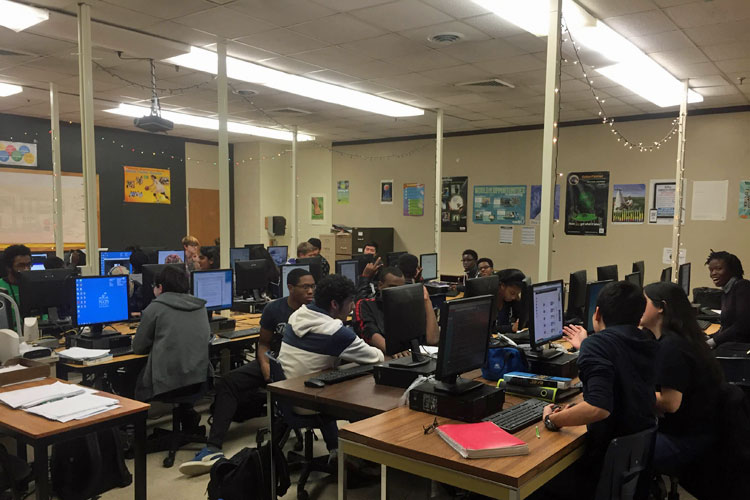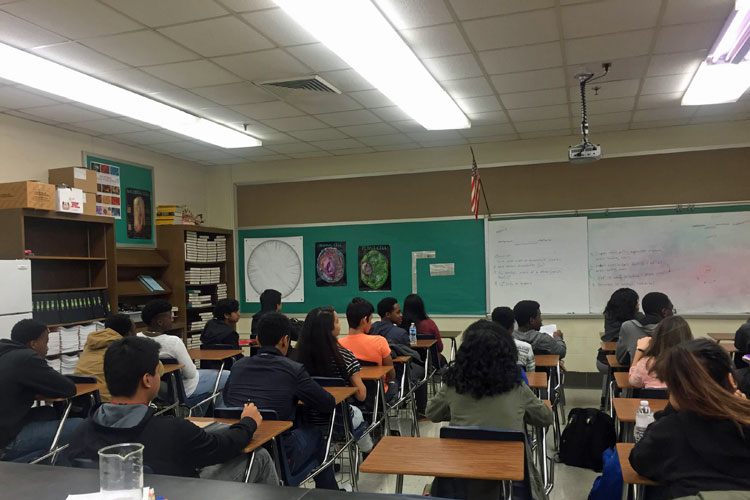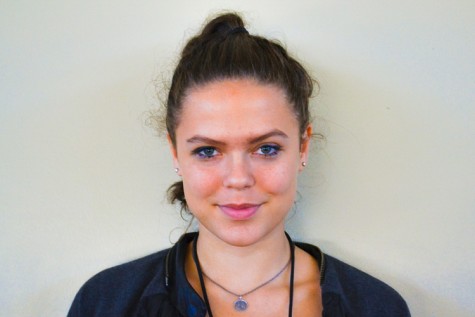STEM Gender Disparity at ERHS Exemplifies National Divide
8th period AP Computer Science
December 7, 2015
Despite equal availability, some STEM classes at ERHS display a clear gender gap, with males dominating, at least in numbers, classes such as AP Physics C, RP Engineering, and AP Computer Science. The divide exemplifies a larger national trend in STEM fields, which is most acute in engineering, physics, and computer science.
The National Girls Collaborative Project cites on their website that although women hold the clear majority (57.3%) in receiving bachelor’s degrees, they represent only 19.2% of engineering degrees, 19.1% of physics degrees and 43.1% of mathematics and statistics degrees. The separation is just as evident in high school – in June of 2015, a US News and World Report’s article reported on a study that found that male students scored higher than their female counterparts on all STEM AP exams. According to the same article, high school females also expressed interest in technology and engineering fields at a much lower rate than high school males.
Enrollment numbers at ERHS emphasize this gap clearly. AP Computer Science, a class that explores college-level computer programming concepts, has a total of 15 girls enrolled out of 50 total students, and the precursor class Intro to Computer Science has 32 out of a 118 total. In the AP Lang 11 class, on the other hand, 70 out of the 104 enrolled students are girls.
Higher-level math, though, exhibits an almost perfect divide; out of the 100 students enrolled in AP Calculus BC, 49 are girls.
Physics teacher Ms. Yau-Jong Twu, who creates instructive physics videos for her YouTube channel “TwuTube,” said that in the reports she receives from YouTube, only about a third of her viewers are female. What’s more, is that out of the 46 total students taking AP Physics C, a calculus-based physics course and the highest level physics class available at ERHS, there are 34 boys and only 12 girls. Ms. Twu mentioned that the precursor algebra-based physics classes to AP Physics C exhibit an equal boy-girl ratio.
According to Ms. Twu, who is in her 17th year of teaching physics at ERHS, her physics classes have “always been like this.” Ms. Twu suggested that although girls have the same abilities and potential in physics as boys, they just choose to apply themselves in other areas.
“The gender distribution in Physics C is pretty striking,” wrote senior Hannah Sutton, who is enrolled in both AP Physics C and AP Biology. “There is definitely some disparity. My AP Physics C class is definitely dominated by guys. My AP Bio class is mostly girls.”
“I feel like guys who take upper level science electives get [an] ‘Of course he’s taking that class, he’s really smart,’ reaction, whereas girls, who take the same classes, often just end up being ‘girls who are taking a hard class’,” continued Sutton. “Everyone knows who the ‘smart STEM guys’ are in our grade or our school, but the girls who do just as well aren’t acknowledged as ‘smart STEM girls’ in the same way.”
Some physics students said that they noticed no difference in social attitude. “I definitely see a camaraderie among everyone in physics, no gender-based cliques,” said senior David Gardner, who is also an AP Physics C student.
“All of the girls in the class seem to get along well with the boys, so I don’t get the impression that anybody is treated differently because of their gender,” said senior Christine Bailey. “And also, because it is such a rigorous course, the environment is just really serious and studious most of the time, as everybody is trying their hardest to understand what is going on.
Senior Asha Pawar, who took AP Physics 1 in her junior year, credited her choice to take Microbiology and Physiology instead of Physics C in her senior year to the difficulty of physics.
“Physics is hard, and I didn’t feel that continuing would be the best for me since I had a hard time during Physics 1,” said the senior, who also said that the self-learning aspect of the class was “good to prepare for college,” but “hard [for her] to get used to.” She also mentioned that “the social climate for girls is the same, relatively.”
“I learned the same things as the guys in my class and my teacher was not at all biased in any way,” Pawar continued.
Still, even with students such as Bailey and Pawar citing equal attitude between both genders, the fact of the gender divide remains. According to a Business Insider article, factors such as bias, marginalization, competition, stereotypes, lack of encouragement, and teasing contribute to the lack of women in science. However, if students have found no such activity, then further investigation may be needed to understand why the gender divide remains at ERHS. Some suggest the divide may be a result of more subliminal social tides or a common national attitude.
“I feel like people here are more open to women being in STEM, but that there’s like this cultural background, so we’re hesitant to go into these difficult [fields]” like engineering and physics, said Ms. Arlynda Jorgensen, who teaches Engineering Foundations 2 for sophomores in ERHS’s STEM program, as well as the college-level Production Systems engineering class and Research Practicum (RP) engineering. Ms. Jorgensen said that she grew up in a more conservative environment in Utah, which she described as having a “this is boy’s club” attitude.
“A lot of times girls self-select out of engineering and programming classes,” said Ms. Jorgensen. This could be the case for RP Engineering, a class with currently only three girls enrolled, higher than last year’s two.
“How do we change that cultural ideal that an engineer looks like a man?” asked Ms. Jorgensen.“We need to change that cultural ideal.”






Karim McDonald • Jan 11, 2016 at 1:52 am
What about the racial disparities in STEM at ERHS? They seem concerning. Any plan to write about that?